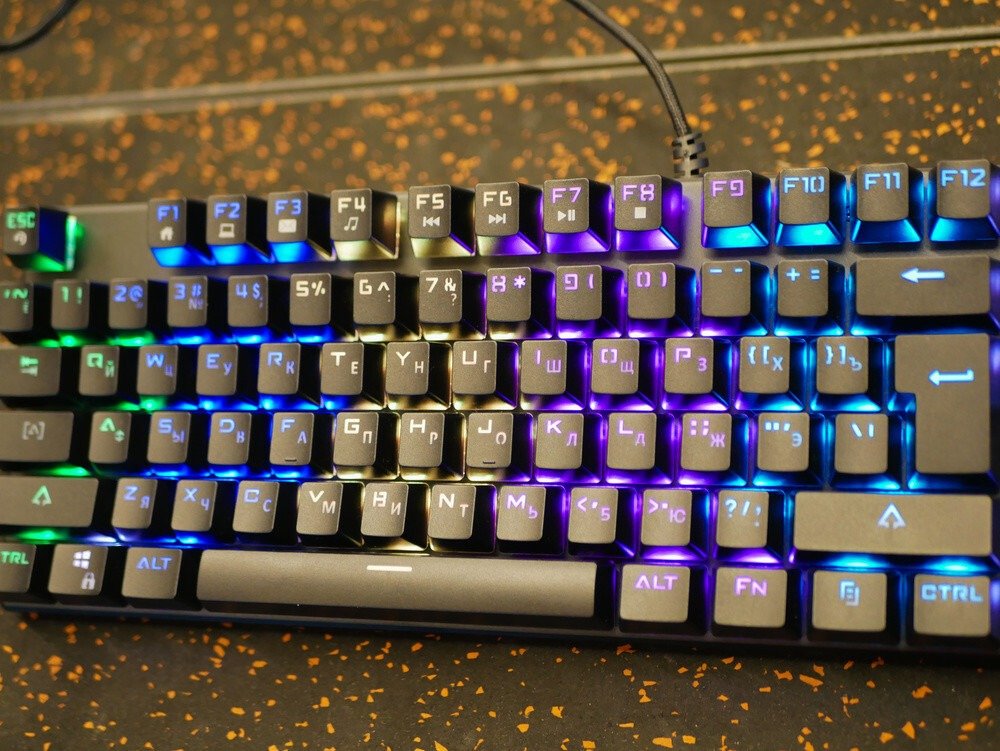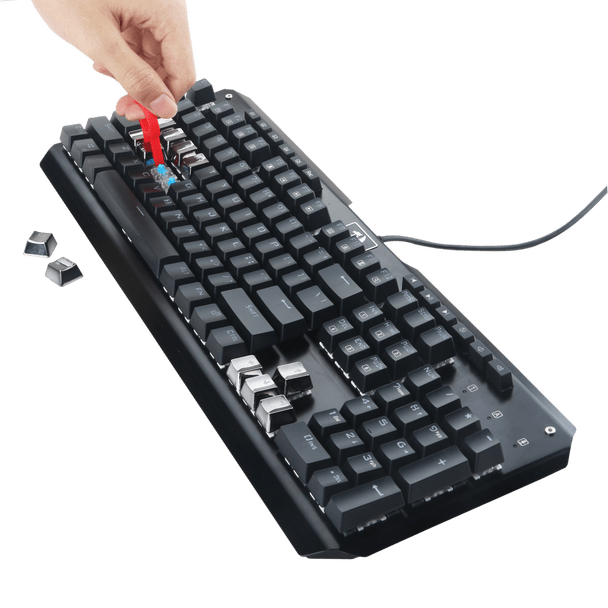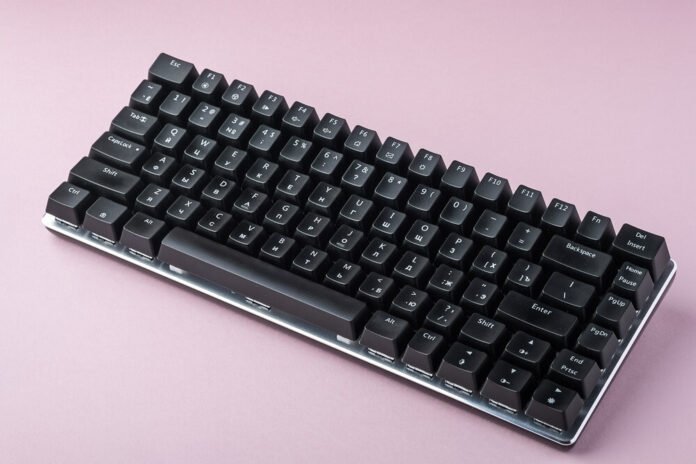Reliable, durable, precise... You are the happy owner of a mechanical gaming keyboard that meets your expectations in every way.
Fast key feedback, optimization of input speed, you are fully satisfied with your purchase which provides you with unparalleled comfort.
Your keyboard has countless advantages.
However, despite your satisfaction, you want change: a more pleasant touch, a desire for originality with unusual colors, a need for cleaning...
Brief ! You want to customize your keyboard, to take care of it to offer you a unique experience.
Changing keys seems the ideal approach to successfully complete your project. The mechanical keyboard allows this operation to be carried out quite easily.
So you go on Youtube to watch tutorials, but you still doubt the viability of your project. You really want to have all the cards in hand before you start.
I'll tell you a secret: I, too, undertook the same approach. And you are right.
To avoid ending up with a keyboard without an unusable key, you must prepare and organize carefully.
To support you, I therefore offer you some guidelines.
In this article, you will find all the steps to follow to successfully carry out “Operation Keyboard.”
Step #1: choosing the keys.

You have decided, you are going to change your keys. You go online and search for the keyset of your dreams.
In front of your screen, you are spoiled for choice: red, blue, fluorescent, in the colors of manga heroes, for gamers, for typists... You are reassured by the abundance of the offer.
After a few hours of searching, you have found the rare gem. You draw out your credit card ready to click on the “Pay” or “Order” button.
STOP! Have you checked the compatibility of the keys with your keyboard?
Vigilance is required. Changing “ easily” does not mean that they are all compatible. You definitely need to check it out.
If the acronyms PBT, ABS, OEM, Cherry are foreign to you, take a few minutes to discover them.
By quickly learning the characteristics of a key, your choice will be more peaceful and you will avoid disappointment upon receipt of your order.
I assure you, I will get straight to the point.
The material of the keys.
The 2 most common materials are PBT (polybutylene terephthalate) and ABS (acrylonitrile butadiene styrene).
ABS keys are the most widespread and used. Less expensive than their counterparts, they can be damaged quite quickly (deterioration accompanied by erasure of the lettering).
These keys exist in two thicknesses.
The thicker one offers comfort of use and soundproofing .
The ABS keys are particularly appreciated: they offer the possibility of having an enlightened retro keyboard.
More resistant, thicker, more comfortable, keys made from PBT are rarer due to their higher cost. They offer, however, a much more pleasant sensation of touch .
They also exist in 2 sizes (“thin” for thin and “thick” for thick). Again, for your comfort of use and soundproofing, choose thickness.
The profile.

And yes ! Not all keys are similar. Their profile, defined by height and striking angle, is well defined.
Each “row” on your keyboard presents keys with a specific profile.
Impossible to place the letter B right next to the letter A, 2 rows above.
These profiles, ultimately specific to each row, give relief and ergonomics to your keyboard for optimal typing sensations.
By respecting the homogeneity of each row, 2 key profiles are at your disposal
layout: OEM profile and Cherry profile.
Generally quite similar in shape, the Cherry profile keys are lower.
The switch.
The switch is the plastic switch, equipped with a spring, present under each key.
To put it simply, the switch is undoubtedly the key element of your comfort. Gamers and typists have different needs.
A switch is characterized by its noise, its feeling and its pressure force necessary to “activate” the button.
A switch with less resistance allows for higher key activation. Perfect for gaming. Difficult for typing.
Important ! Please note: the switches on your keyboard are only suitable for one key profile (OEM or Cherry).
If you want to be more efficient in your daily practice, you may need to change the switches on your entire keyboard. Simply changing keys may not be enough .
The keyboard.
I assure you, we are reaching the end!
The format of the keyboard should be considered carefully, if you do not want to end up with a multi-colored keyboard due to a lack of sufficient parts or with an incomplete keyboard with keys that are too small and unsuitable.
There are 2 main keyboard formats: ANSI and ISO. Only one difference, but a big difference: the keys in the row with the space bar are different sizes.
The ANSI format is the most common.
Finally, what type of keyboard do you have? A full size with 104 or even 105 keys or a 60% keyboard without a numeric keypad or directional arrows on dedicated “spaces” to your right?
Inform yourself carefully before ordering.
Step #2: Organization.
That's it ! You have received your new keys, you hurry to open the package to discover them.
Carried away by your enthusiasm, knife in hand, you are ready to “jump” the keys on your keyboard.
Wait a minute! Take the time to get organized!
Take advantage of this “change of look” to do a little spring cleaning. You will be surprised at the “treasures” that are hidden under your keys.
Your new keys will thank you.
Equip yourself:
- from your smartphone;
- the keycap puller that was provided to you when you purchased the keyboard;
- a disinfectant solution;
- cotton swabs and paper towels;
- a vacuum cleaner (preferably tabletop).
Sit on a table that is spacious enough to work in good conditions.
Ready ? Let's go !
Step 3: Removing the keys.

This operation lasts 5 to 10 minutes.
First, turn off your computer and then unplug your keyboard. (If you have a wireless keyboard, feel free to remove the batteries.)
Next, take a photo of your keyboard to keep track of the key layout.
Take your key extractor and remove them starting from the top and left of your keyboard. To find your way, do this operation in horizontal rows from left to right.
If you don't have a keycap puller, here are the models we recommend:
If you have never used this tool, you must place yourself vertically on the key, clip it in and gently pull it upwards.
Never force! You risk damaging a switch or a key.
Some slightly longer keys like the space bar or the enter key may require a little more vigilance.
Place the keys on your workspace in the same order as those on the keyboard. This may help you.
Step #4: cleaning the keyboard.

Your keyboard is now empty of keys. It's time to tackle cleaning your mechanical keyboard ! Allow a good hour to do things correctly.
First, turn your keyboard over and shake it over a trash can to remove the first impurities.
, use a Cotton Swab and lightly soak ends in the cleaning solution of your choice.
Don't drown your keyboard! Be careful with electrical components!!
Clean the spaces between the switches with soaked cotton swabs. (You will need to use more than one as they deteriorate during operation.)
Dry with the dry end of the Cotton Swab or a paper towel, always gently.
Perform the same operation on the edges of the keyboard. This time you can directly and lightly soak a sheet of paper towel and dry.
Conclude the cleaning with a vacuum cleaner.
Step 5: inserting the keys.
It 's the big time! You will be able to marvel at your touches. You insert them one by one until you hear a click.
Always remain vigilant and carefully install large keys (space keys, enter keys, etc.).
Plug your keyboard back in (or reinstall the batteries for wireless keyboards) and then turn your computer back on.
You have seen that changing keys on a mechanical keyboard requires attention to detail and organization.
Now that you know the best practices, customize the keyboard of your dreams , and don't hesitate to keep me informed in the comments of the progress of your project.





